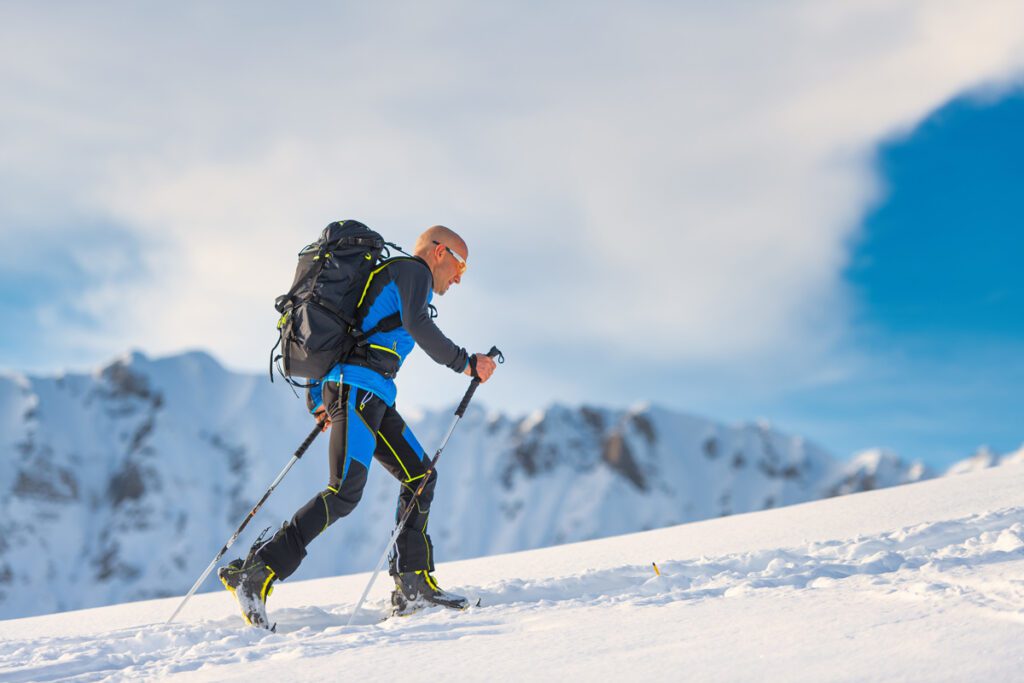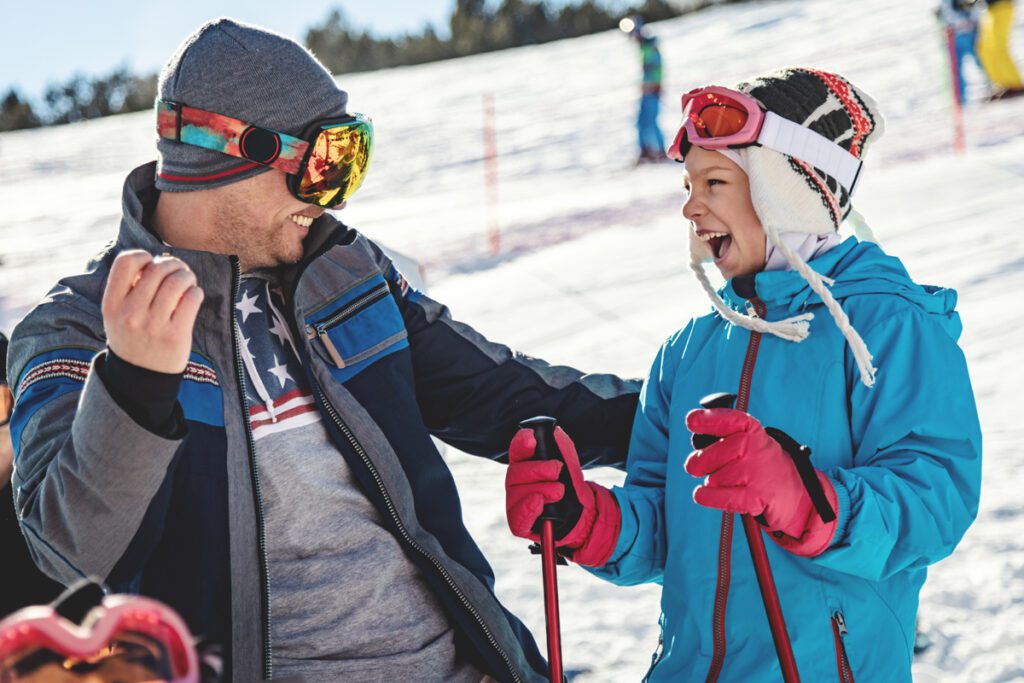Finding the Best Ski Jackets for You
Shopping online for the best ski jackets can get overwhelming very quickly. So many brands, too many styles, and lots of added features. Between waterproofing, wind proofing, shells, insulation and breathability, there’s a lot to consider. And what the heck is wicking, anyway? With price tags ranging from just over $100 to more elaborate and expensive high-end models closer to four figures, ski jackets can run the gamut, to say the least. But, when it gets down to it, what’s important to know and what’s just marketing hoo-ha?

Below, we break down what’s in vogue with the best ski jackets in the 2020s. We strip away the hype and marketing shine, and tell you what to look for, what you can avoid, and what brands you can trust to keep you warm and protected on the mountain – at a good price. Let’s get into it.
Breathability
In the ski jacket world, there’s a lot of attention placed on what’s called “breathability.” Breathability is the ability of a fabric to allow moisture vapor to be transmitted through the material. It’s very technical when you get down to it: It has its own rating that is measured in the grams of water vapor evaporated through the material in a 24-hour period.
Breathability is important if you plan on a big backcountry ski outing where you might hike for miles, or if you just sweat a lot. It is often measured in grams – with 5,000g being low and 20,000g or more considered very breathable. Look for the ratings on the tags when you’re shopping.
Windproof Ski Jackets
Windproof jackets are lightweight and designed to block the wind’s harsh effects against the skin. They are usually constructed from comfortable, flexible material that resists the wind but is also breathable.
Waterproof Ski Jackets
If you like to ski in the spring, you’re going to need a waterproof outer layer to handle all that slushy snow that’s on the mountain in March and April. These days, most of the best ski jackets have a waterproof resistance rating printed on the tag that describes how water-resistant the jacket is.
The level of waterproofing can be measured in millimeters – 5,000mm is low waterproofing, 10,000mm is average, 20,000mm is considered high, 28,000mm is extremely high. Some brands use their own brand of waterproofing technology, while others use big-name technology like Polartec.
“Waterproof breathable shells” from high-end brands like Gore-Tex are very popular right now (and therefore expensive) but aren’t ultimately necessary unless you plan on skiing or snowboarding during considerable rainfall. Keep in mind: Most ski jackets have pit zips that can be opened for ventilation if you get hot … or you could simply unzip it a little. (See more about “pit zips” far below.)
This year, North Face has launched a technology called FutureLight that boasts 100 percent waterproofing alongside full breathability.
Fully Taped vs. Critical Taped
Waterproof jackets may have a term “taping” as part of the description. There are two types of taping. First, “fully taped” means that all the seams on the jacket have been sealed with a coating so that water doesn’t get in. “Critical taped” means that only major seams along the sides and outside have been taped.
Wicking
The linings of the best ski jackets are often constructed with moisture-dispersing material or mesh that is quick drying and designed to “wick away” perspiration from the body. This material keeps you dry when it’s warm or when you’re sweating through a grueling run.

Layering
You’ll hear skiers and snowboarders recommend this a lot: “Dress in layers.” That’s known as layering – a way of dressing with numerous combinations of clothing in layers that you can add and remove as weather conditions change throughout the day on the mountain. The idea is that an undershirt, shirt, sweater or sweatshirt and jacket combination is a better choice than one massively thick coat.
Shells
There are two main groups of layering – shells and insulation. Shells are the outermost layer and are your primary defense against the elements. Shells are typically waterproof or windproof. Keep in mind: If your shell is waterproof, it is also windproof. But a windproof shell is not always waterproof.
Insulation
There are two kinds of insulation – natural and synthetic. Insulation layers are always worn under the shell and are used to retain body heat. Commonly, ski jackets are insulated with either Merino wool, goose or duck down, or fleece.
- Merino wool is softer and thinner than common wool, so it’s easier to wear directly against the skin.
- Goose or duck down is the soft under plumage that keeps geese, ducks and other waterfowl warm and dry. Down does not have stiff quills like regular feathers.
- Fleece is a specially woven synthetic polyester that comes in a variety of thicknesses and weights. Windproof fleece is available, but pricey.
Modular Ski Jackets
Modular – or “3-in-1” – ski jackets come with separate layers (a shell and an insulation layer) that are made to zip together. Zipped together, the multiple layers provide the maximum warmth. Unzipped, they can be worn individually. Major ski brands like North Face have modular ski jackets with additional layers and shells that can be purchased for further customization options.
Insulated Shells
Jackets with an insulated shell have a thick insulation permanently sewn into the inside of the jacket. Although warm, these insulated jackets are not very versatile on the mountain because they are heavy, bulky and can often limit movement.
Hard Shell vs. Soft Shell Ski Jackets
A hard shell ski jacket is your best defense against the elements. It is the warmest ski jacket on the market. A hard shell jacket is completely waterproof and windproof and will protect you from wind, sleet and snow.
Soft shell ski jackets are a hybrid of a hard shell and an insulated liner (such as a fleece jacket). A newer option in ski jackets, soft shells are not waterproof like a hard shell but are water resistant.

Hoods
Hoods are a weird thing when it comes to skiing. First, you should be wearing a helmet – so a hood really doesn’t do any good. Most jackets have a removable hood or a stowable hood that can be stashed into a pocket of the jacket.
Some jackets have what’s called a “helmet hood” that’s meant for covering climbing helmets. Unfortunately, helmet hoods often don’t fit larger ski helmets.
Powder Skirt
Ski shells have an elastic cord a few inches above the bottom of the jacket that helps seal the jacket from snow. The cord keeps the bottom of your jacket snug against your body, so snow does now creep up from underneath. This is important because you don’t want to constantly be getting goosed with cold snow up your layers and down your pants during your run.
Internal Cuffs and Thumb Loops
Internal cuffs can help stop the wind from getting between your cuffs and your gloves. These stretchy cuffs often have a loop for your thumb to help keep it in place while you’re navigating the slopes. They are often constructed from moisture-wicking material and designed to be low profile, so they fit well under your ski gloves.
Pit Zips and Other Features
The best ski jackets have no shortage of bells and whistles. One of the more common features are pit zips, small zippers that allow you to unzip areas of your jacket to let cooler air in. They’re called pit zips because they are usually located near the armpits. Other embellishments vary from brand to brand, but here are a few popular frills you’re likely to see on newer ski jackets.
- Goggle pocket
- Smartphone pockets with an insert so headphone cables can be threaded to your ears. (Pro tip: Inside pockets protect your phone better and keep it warm which helps the battery last longer.)
- Pockets for snacks
- Ski pass pocket (for newer pass cards that have replaced the traditional clip-on paper pass.
- Lens cleaning cloth
Still not sure what ski jacket is best for you? Many ski rental shops also rent ski jackets. So, you can test out some before you make your choice!